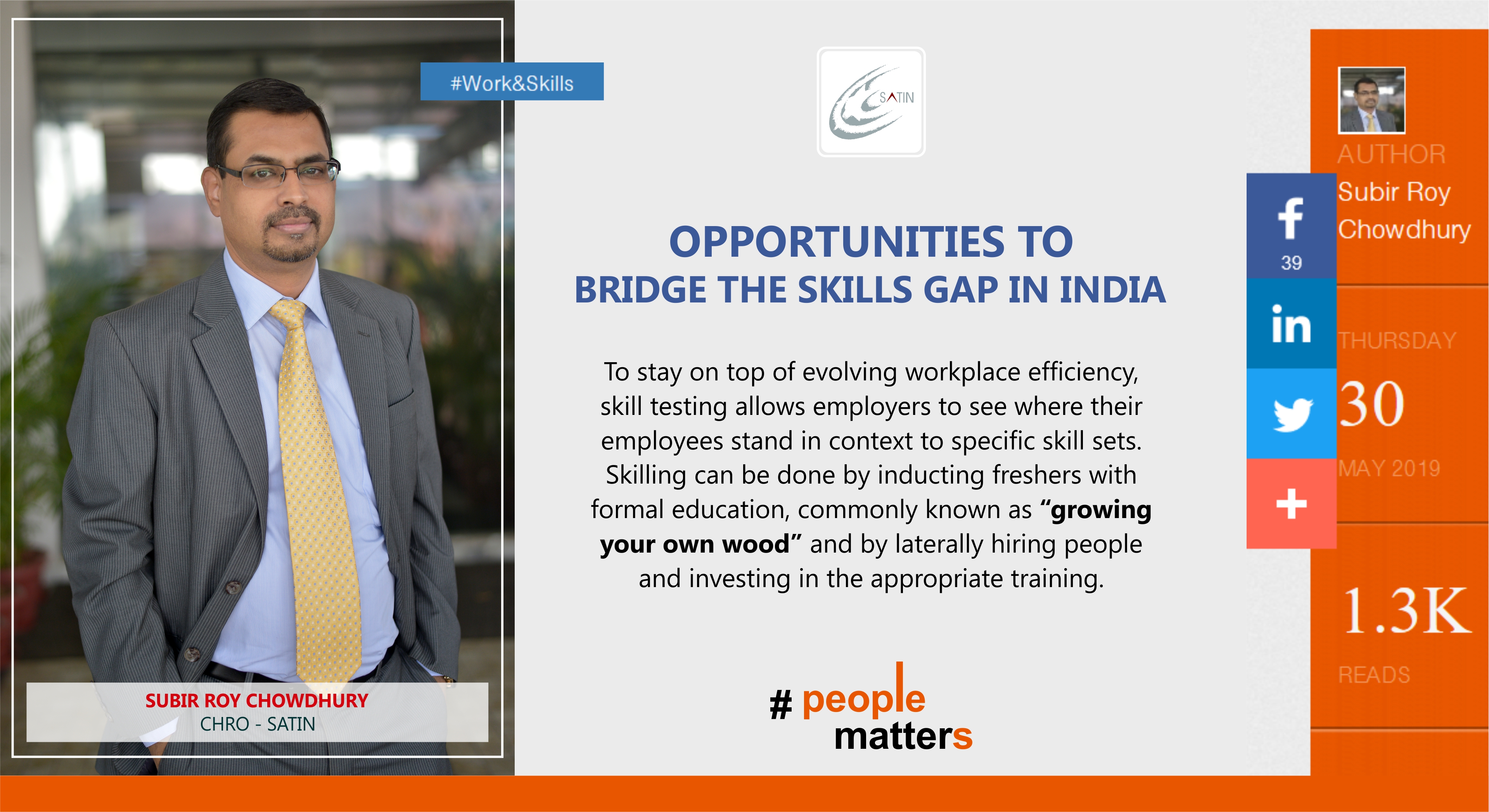
Skill development is one of the crucial components for India’s potential economic growth for transforming into a diversified and internationally-competitive economy.
The globalized world demands vocationally skilled manpower to convert growth opportunities into jobs and steady incomes. As per a recent study, 12.8 million new job-seekers entering the job market every year, skill development has become one of India’s imperative priorities. The necessity for skilling young people is recognized and has been flagged as a general priority for almost a decade, with important initiatives being launched by the government such as Pradhan Mantri Kaushal Vikas Yojna and SANKALP under National Skill Development Corporation India (NSDC). Skill development is one of the crucial components for India’s potential economic growth for transforming into a diversified and internationally-competitive economy.
One of the biggest challenges organizations are grappling with is the SKILL GAP. At present, the skills gap India faces is a consequence of rapid change – there is a huge disparity between the skill set required and the skill set the candidate actually possesses. Today, organizations are more concerned about their future as compared to a decade ago. Complex business environment encircled by challenges in the regulatory framework are a serious threat to most new age organizations today. Most chief human resource officers (CHROs) are questioning themselves as to how do we make organizations geared up for the future with right kind of talent who are not only prepared for today but also are able to cope with the dynamic challenges of tomorrow.
Let us have a look at how we can bridge the skill gap in organizations:
To stay on top of evolving workplace efficiency, skill testing allows employers to see where their employees stand in context to specific skill sets. Skilling can be done by inducting freshers with formal education, commonly known as “growing your own wood” and by laterally hiring people and investing in the appropriate training. A blend of both these practices is something most organizations are resorting. Skill testing can present a good benchmark so that you can see where your employees are before you get started. Later, you can test them again after training and development has been completed. This will also allow you to see which employees are able to learn more quickly.
Creating the apt skill set for addressing customers in rural India
Skilling is all about having a pragmatic approach towards problem-solving which happens only when you start understanding customer requirements. For instance, the needs of customers in rural India are particularly different from their urban counterparts. However, rural Indians aim at being empowered and recognized. Consumer behavior is changing at a very fast pace irrespective of geographical boundaries. Today customers need more information and knowledge and hence it is vital for every employee to provide all the information of the product intended to be sold. For instance, organizing classroom and field activities for training the employees based on financial literacy, financial tools and nuisances of customer behavior, selling skills etc. This approach will not only enhance customer satisfaction but also assist in acquiring customer empowerment as a critical skill.
Vocational Training
Very few SMEs have the funds and means for offering holistic skill development for their employees. This leads to a skill gap within the organization causing either concealed employment or higher attrition. To counter this, a government incentivized vocational training program can be incorporated. Alongside skill training, this will also help in increasing employability. Vocational training ensures the kinds of skills imparted to trainees are viable and linked to the available jobs. For instance, the existing government, through Sector Skill Councils (SSCs) and National Skill Development Corporation India (NSDC) has presented a number of opportunities for entrepreneurs to step-up and generate ventures for imparting skill education.
Go digital with training
Development and learning don’t have to consist of costly processes with elongated lead times. Recent off-the-shelf digital innovations make it easier for employees to continuously acquire skills in the context of their business. Forward-thinking employers have a comprehensible opportunity to step into both; future-proof their organization and better retain employees. Technology is a vital driver which can easily assist in scaling up the skill development initiative. If skill segments, streams are identified then the next step is to define educational contents or syllabus including the practicality of the training. Technology can help to identify standard training tools for the candidate and all tutorials, assignments; tests can be conducted using technology. To facilitate faster propagation of knowledge, creation of quality digital content on training modules is also obligatory and these must be available to all on the internet. Free digital content will promote more people, principally self-employed people and entrepreneurs to proactively work towards enhancing their skill sets.
Skill development will assist potential employees to get easier access to the formal job market where they can negotiate for higher incomes, work under more affable labour conditions, have better job security and enhanced access to healthcare and medical facilities. The objective of creating a skilled workforce has to be coupled with corresponding employment opportunities for the youth, to resolve the core challenge of unemployment in the country.
- Date: May 30, 2019
- Client: Subir Roy Chowdhury
- Category: Blogs
